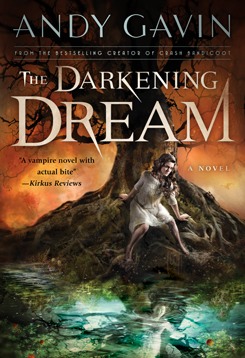This is one of those eternal writer questions, getting into the heart of the creative process. For those of you who don’t know, a “plotter” is someone who plots out (outlines) their entire story before writing it and a “pantser” is at the opposite extreme, starting with an idea or a character and just going for it, like a daydream. Of course, everything between exists as well, it’s an analog space. And for what it’s worth, writers, including myself, love to talk about this.
Given that I’m more hard core, workaholic, and over-organized than nearly everyone I know (and having gone to MIT that includes a lot of anal folks) I would have assumed I was a plotter.
But when I got into it a couple years ago by starting to write The Darkening Dream, I found I totally prefer to just go with it. I do need to plot a chapter or two ahead as I can’t write the scenes until I see in my head what’s going to happen, but after I finished revising my first novel (and there was a lot of revision) I decided to try to plot the whole second. This resulted in about two months of fairly unproductive head banging. Then, with only a lame first act plotted, I started writing and it veered onto a different course anyway. The characters and the situation seem to dictate what happens. Often you can’t tell in plotting which secondary characters will be the coolest, etc.
But certainly the pantser approach requires plenty of revision. I always have to go back and examine the motivations of the characters after the first draft and map more of the formal dramatic arc onto the story in the second and third drafts. Pantsing also leads to Second Act Problems (what doesn’t?). I think that’s just the way it goes. It would be very difficult in the first draft to do the kind of “setup and payoff” that good stories have. A great example of this is the film Back to the Future which undoubtedly had umpteen drafts and where every little reference at the start of the film is a setup that tests and then pays off for one of the characters. Case in point where George McFly gives in to Biff about the car. Then back in 1955 he does it as young George, but by the end of the film, with Marty‘s help he has the backbone to be in charge in the revised 1985. This is formulaic but satisfying and artfully crafted in a way that takes multiple passes. Still, I think you can start any which way that works for you. Sometimes getting the draft finished is the most important thing. Then you can step back and look at what needs changing.
Personally I find the two different modes: plotting vs. just writing, to use different sides of the brain, and therefore useful to stagger. I can only handle a few days of plotting before I need the release of getting it out there. There really isn’t any rush in writing as good as just pounding out a great scene that’s already gelled in your head, and it’s even better when the scene and characters take on a life of their own and bring something novel to the process. Looking back on it, I realize that as a computer programmer I took this same exact alternating approach (between designing the algorithm and just coding) and that the rush and rhythm were nearly identical.






































































































































































































































































































































































































































































